When the westward expansion of the Run and Shoot offense reached the beautiful beaches of Hawaii and the Air Raid offense settled into the picturesque Washington town of Pullman, these “throw the ball at all costs” offenses reached their geographical limit. The spread of these unique offenses was complete. It was time to move back east.
Mike Leach’s pure distillation of the Air Raid that he and Hal Mumme started to develop in the late 1980s will now make its way east of the Mississippi River and back to the SEC from whence it came. Replacing Leach and the Air Raid at Washington State will be Nick Rolovich and the Run and Shoot, both formerly of Hawaii.
[Editor’s note: Check out PFF’s 2020 Mock Draft Hub, NFL Draft Big Board and NFL Mock Draft Simulator. PFF Elite subscribers can also download the 1,100-page 2020 NFL Draft Guide.]
It’s easy to broadly paint both offenses as pass-heavy schemes, but you can show just how different they truly are once you get into the weeds a bit.
The two teams are similar in terms of the sheer amount of passes, the personnel groupings and the formations they use. No team has thrown the ball more on non-RPO (run-pass option) passes than Washington State over the last three years, while Hawaii places third in that regard. In 2019, the two squads paced each other, finishing first and second, respectively.
In the last two seasons — since Rolovich has become more traditionally Run and Shoot — 91% of Hawaii’s offensive snaps have come in 10 personnel (four receivers and one running back). For Washington State, it’s 82% in the same grouping. This means that both teams spend over 90% of their snaps in what is known as “four open” formations.
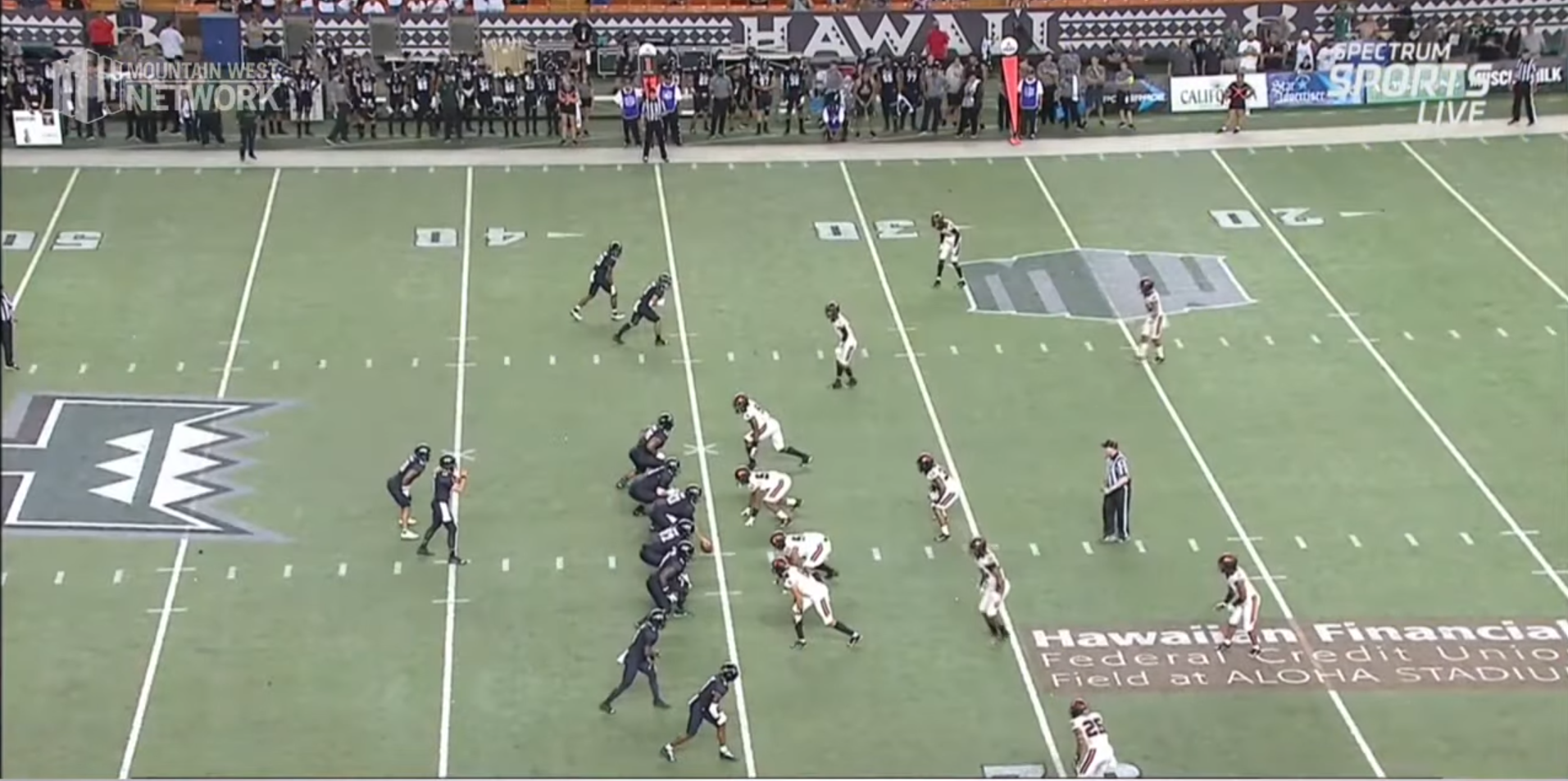
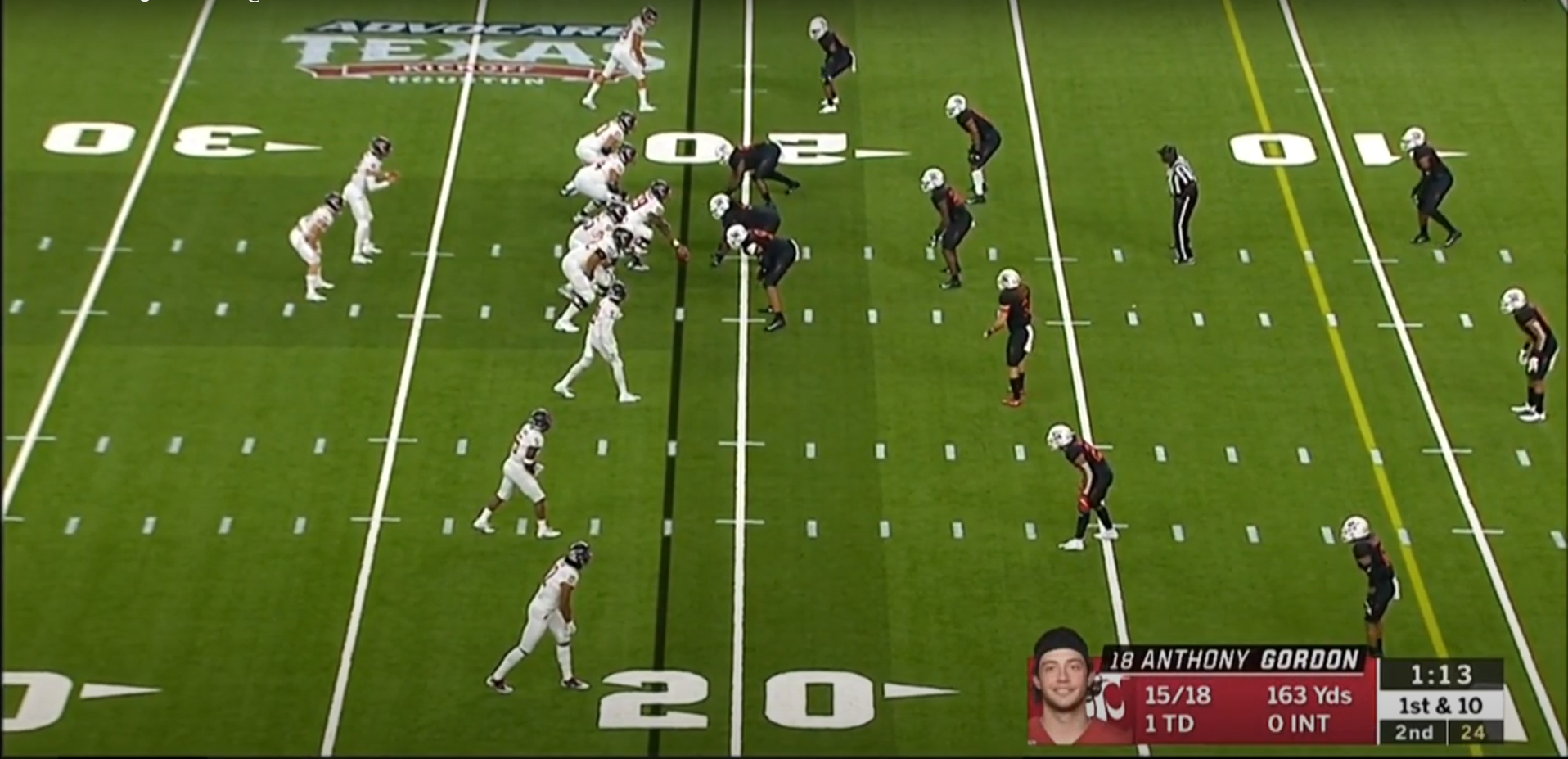
Each team went into trips 51% of the time, with Washington State going doubles 40% of the time and Hawaii going doubles 47% of the time. Both sides then fill out the rest of their snaps with “empty” formations.
Hawaii also used motion on 35% of their snaps the past two years while Wazzu did it only 18% of the time, but both teams liked to stack their receivers in these formations, with Hawaii stacking two receivers 31% of the time and WSU using it 27% of the time last season alone.
In terms of a run/pass ratio, over the past three years, Wazzu threw the ball 80% of the time a Hawndaii threw it 64% of the time. But while Leach has no interest in any semblance of a running game, Rolovich at least toys with the idea.
Most of this difference comes from Hawaii’s RPO and quarterback-run game, as 73% of Rolovich’s run game has one of those aspects to it, while that figure falls to just for 49% for Leach and the Air Raid.
Both coaches aren’t keen on straight running the ball, but Rolovich has adapted his run game to maximize success by neutralizing defenses with option concepts. Leach, on the other hand, has decided to continue to maximize his success by, well, throwing the football more.
The Air Raid aficionado has shown a willingness to use his quarterbacks more in the run game if he feels they can handle it. With Luke Falk and Gardner Minshew, Leach called 113 and 85 quarterback runs, respectively, in those two seasons. That number plummeted to 21 total last season with Anthony Gordon. It was the same story just with RPO’s, too, as Washington State combined for 241 with Falk and Minshew as the starters before cratering to only 19 with Gordon.
New Mississippi State quarterback K.J. Costello ran the ball on an option or designed QB run play only eight times in the last two seasons at Stanford, so expect this trend from Leach to continue.
Leach, however, makes up for his lack of a designed run game with screen passes. In 2019, Washington State finished fifth in the country in total number of screen passes, and they finished second in that regard in 2017. They were also quite good at running them, too, as they finished 2019 as the fifth-best screen team in terms of expected points added (EPA) per play at 0.252, while their 0.139 EPA per screen play over the last three seasons ranks sixth over that span.
Generally, Leach’s screen plays are run for receivers. In fact, 236 of the 324 screens over the past three seasons went to players lined up wide or in the slot. However, in 2017, Leach threw 40 of his 116 screens to players lined up in the backfield, so he is more than capable of adapting.
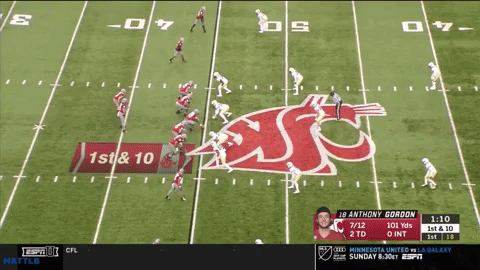
Seeing a ton of screen passes might come as a shock to fans of Mississippi State, who only saw a combined 49 screens thrown over the past two years combined. Of their returning players, running back Lee Witherspoon posted the best receiving grade on screens at 86.3, but that was on only three targets, so take it with a grain of salt.
Under Rolovich, Washington State’s RPO game will go up significantly. After only running 86 run plays with an RPO attached in 2017, Hawaii ran 194 in 2018 and then 189 in 2019. The 2019 team finished sixth in the country in the percentage of plays that were successful from an EPA standpoint at 54.5%. And when Hawaii quarterbacks pulled the trigger and threw the ball on these RPO plays, their successful play percentage went up to 72.2% — first in the country.
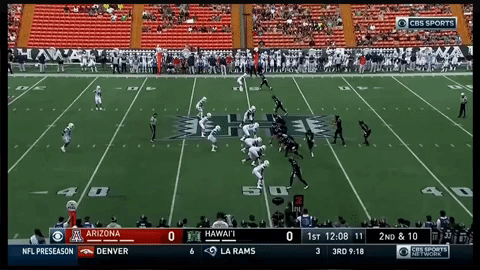
Hawaii rarely runs the “same-side RPOs” that you’ll see Alabama and LSU run, for example. This means that whichever side the quarterback opens up to mesh the ball with the running back, that is the side he’s going to be reading for the throw.
Hawaii mitigates the defense’s ability to scout these looks by keeping the running back in a pistol alignment before motioning him down to offset the quarterback before the snap. There are two main pass concepts they’ll tag on their runs, and it’s consistent in both trips and doubles. They love the slot seam, whether it’s from two-receiver or three-receiver sets, giving the seam-runner the ability to bend the route to find space. The other concept is the simple slant from the most inside receiver. With the slant RPO, they are generally reading a defender who is trying to play the run and pass. The slot-seam RPO is more of a “we’re going to run the ball unless you let our slot receiver run into space.”
Both running games produced a positive EPA per play last season. On the Washington State side, most of this has to do with the team only running the ball when the defense presents a run look. In fact, Leach doesn’t call run plays; all the runs are checked into by the quarterback at the line of scrimmage. The bulk of both running games are made up of inside zone — 43% for Rolovich and 71% for Leach last year. Hawaii’s second favorite run was power. For Leach, it was draw.
Finally, we have arrived at the main course: the passing game. Modern football has seen both the Run and Shoot and the Air Raid disseminate all levels of the sport, so the uniqueness within each play doesn’t exist as much anymore. Almost every team in football runs its own version of mesh, for example. Where the difference lies, though, is in how often these two coaches stick to their favorite concepts and run them as much as possible.
The Run and Shoot philosophy pits two separate half-field reads for the quarterback to work through. Generally, to the front side of the play, the pass concept will work off the cornerback’s leverage and technique. Those front side patterns are usually locked, so the receivers run the routes give or take how they show up in the playbook.
Most of these concepts put the cornerback to that side in a bind. Against zone, they want the cornerback to have to pick one of the routes that flood his zone, and the quarterback will throw the ball accordingly. The exception is if there is only one receiver, his route will switch down the field depending on what the cornerback does.
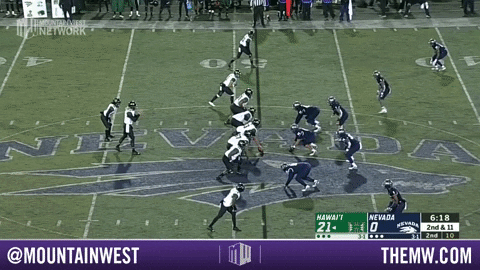
If those locked routes don’t appeal to the quarterback, he will shift his eyes and feet to the unlocked backside routes. Most of the time, on the backside of pass plays, Rolovich has his receivers run vertically and then break off their routes based on the leverage of the defender in front of them. This results in a bevy of different combinations. These routes develop later than the front side routes, so when the quarterback gets his eyes to the backside, they have already declared where they are headed.
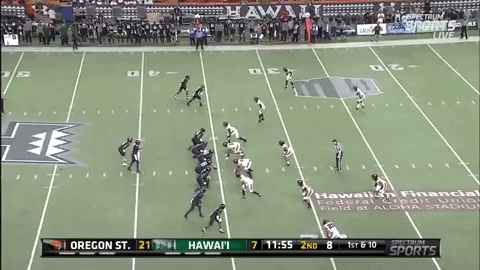
While there is overlap, the contrast between the Run and Shoot style and the Air Raid exist in this type of dynamic. The Air Raid has more full-field locked concepts. It is more of a progression-based system. The quarterback works from the first read to the second read to the third and fourth and so on. The quarterback knows exactly where those routes will be.
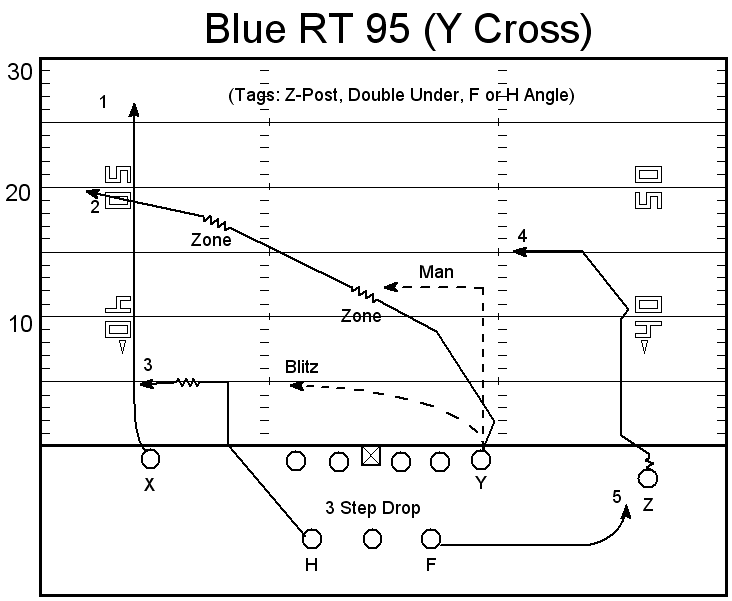
While Nick Rolovich’s Run and Shoot has almost no routes cross the middle of the field, most of the staple passing concepts of the Air Raid do. From “Y-Cross” to “Mesh” to “Shallow Cross,” all of them have routes that are locked to cross the midline. These plays, along with “Four Verts,” another Air Raid classic, are considered full-field reads.
Y-Cross
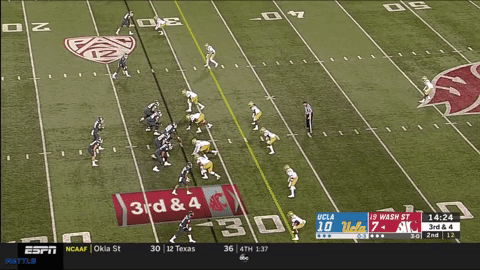
Mesh

While both offenses treat the passing game as its one true king, the granular differences do make for two very unique attacks. Luckily for Washington State, the personnel is in place to adapt quickly to Rolovich’s aerial attack. The same cannot be said for Mississippi State’s roster, although the addition of K.J. Costello might mitigate some issues. Success for both programs will be measured differently, but Rolovich really has a chance to continue pushing Washington State forward and get over the “Husky Hump” in Seattle. Meanwhile, Leach has his hands full in Starkville, taking over a program that has seen success in the past decade, unlike most of its history.
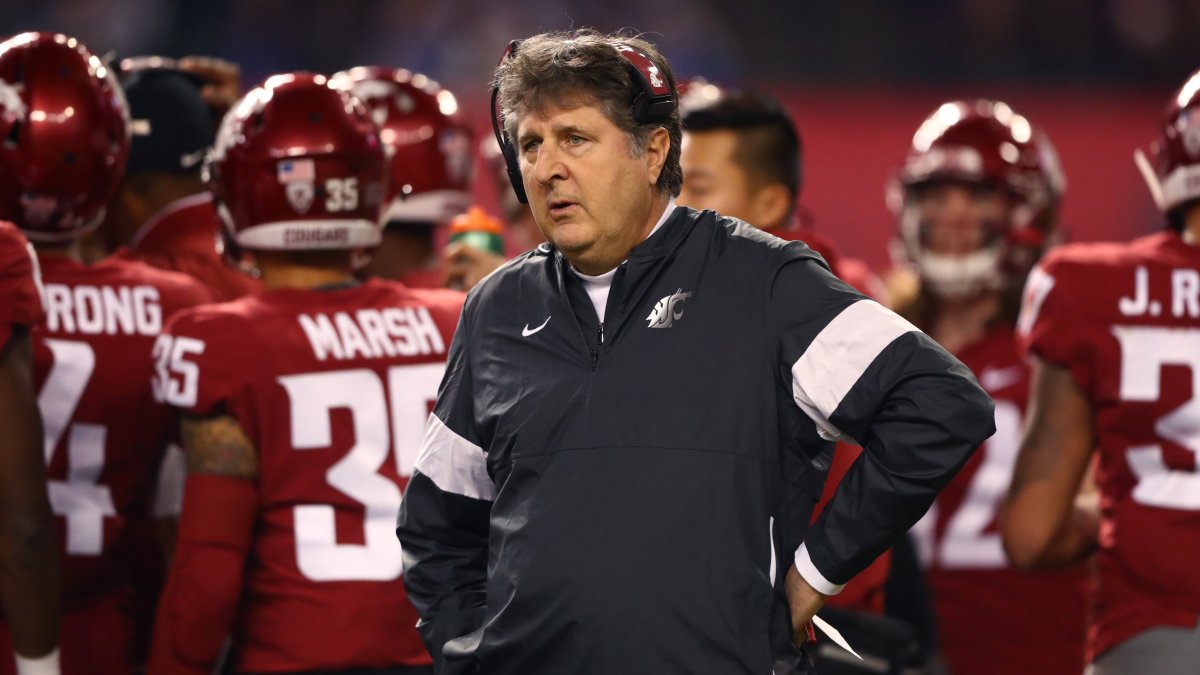


 © 2025 PFF - all rights reserved.
© 2025 PFF - all rights reserved.